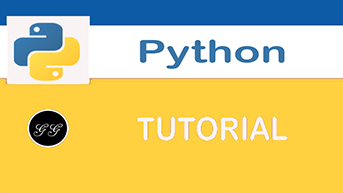Python 2 vs Python 3: Key Differences
What is Python 2?
Python 2 made code development process easier than earlier versions. It implemented technical details of Python Enhancement Proposal (PEP). Python 2.7 (last version in 2.x ) is no longer under development and in 2020 will be discontinued.
In this tutorial, you will learn,
- What is Python 2?
- What is Python 3?
- Why should you learn Python 2?
- Why should you use Python 3?
- History of Python 2
- History of Python 3
- Key Differences Between Python 2 and Python 3
- Python 2 vs. Python 3 Example Code
- Which Python Version to Use?
What is Python 3?
On December 2008, Python released version 3.0. This version was mainly released to fix problems which exist in Python 2. The nature of these change is such that Python 3 was incompatible with Python 2. It is backward incompatible Some features of Python 3 have been backported to Python 2.x versions to make the migration process easy in Python 3.
As a result, for any organization who was using Python 2.x version, migrating their project to 3.x needed lots of changes. These changes not only relate to projects and applications but also all the libraries that form part of the Python ecosystem.
Why should you learn Python 2?

Although, Python 2 is an old open source version here are where you still need to learn Python 2:
- To become a DevOps engineer and you need to work with configurations management tools like puppet or ansible. Here, you need to work with both of these versions.
- If your company's code written in Python 2, you will require to learn to work with that
- If your development team is working on a project that depends on specific third-party libraries or software which you are not able to port to Python 3, then Python 2 is the only option available for you.
Why should you use Python 3?

Here, are prime reasons for using Python 3.x versions:
- Python 3 supports modern techniques like AI, machine learning, and data science
- Python 3 is supported by a large Python developer's community. Getting support is easy.
- Its easier to learn Python language compared to earlier versions.
- Offers Powerful toolkit and libraries
- Mixable with other languages
History of Python 2
- Python 2.0 - October 16, 2000
- Python 2.1 - April 17, 2001
- Python 2.2 - December 21, 2001
- Python 2.3 - July 29, 2003
- Python 2.4 - November 30, 2004
- Python 2.5 - September 19, 2006
- Python 2.6 - October 1, 2008
- Python 2.7-July 3, 2010
History of Python 3
- Python 3.0 - December 3, 2008
- Python 3.1 - June 27, 2009
- Python 3.2 - February 20, 2011
- Python 3.3 - September 29, 2012
- Python 3.4-March 16, 2014
- Python 3.5 - September 13, 2015
- Python 3.6- October 2016
- Python 3.7- June 2018.
Key Differences Between Python 2 and Python 3
| Basis of comparison | Python 3 | Python 2 |
|---|---|---|
| Release Date |
2008 | 2000 |
| Function print |
print ("hello") | print "hello" |
| Division of Integers | Whenever two integers are divided, you get a float value | When two integers are divided, you always provide integer value. |
| Unicode |
In Python 3, default storing of strings is Unicode. | To store Unicode string value, you require to define them with "u". |
| Syntax |
The syntax is simpler and easily understandable. | The syntax of Python 2 was comparatively difficult to understand. |
| Rules of ordering Comparisons | In this version, Rules of ordering comparisons have been simplified. | Rules of ordering comparison are very complex. |
| Iteration |
The new Range() function introduced to perform iterations. | In Python 2, the xrange() is used for iterations. |
| Exceptions |
It should be enclosed in parenthesis. | It should be enclosed in notations. |
| Leak of variables |
The value of variables never changes. | The value of the global variable will change while using it inside for-loop. |
| Backward compatibility | Not difficult to port python 2 to python 3 but it is never reliable. | Python version 3 is not backwardly compatible with Python 2. |
| Library |
Many recent developers are creating libraries which you can only use with Python 3. | Many older libraries created for Python 2 is not forward-compatible. |
Python 2 vs. Python 3 Example Code
Python 3
def main():
print("Hello World!")
if __name__== "__main__":
main()
Python 2
def main():
print "Hello World!"
if __name__== "__main__":
main()
Which Python Version to Use?
When it comes to Python version 2 vs. 3 today, Python 3 is the outright winner. That's because Python 2 won't be available after 2020. Mass Python 3 adoption is the clear direction of the future.
After considering declining support for Python 2 programming language and added benefits from upgrades to Python 3, it is always advisable for a new developer to select Python version 3. However, if a job demands Python 2 capabilities, that would be an only compelling reason to use this version.

